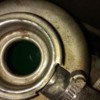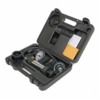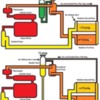First time commenting on my Pantera 4269
had her for a few weeks, very original car and happy with my purchase. now getting odd jobs done.I thought id share one of my problems it may be of use to others.
In regard to the water tank closest the engine there is a lump or drip shaped i think it is solder from manufacture and its right were the pressure cap should seal,theres is also a depression in the radiator cap seal as a result of forming around the lump,
i think any one who is having trouble keeping the pressure in the cooling system should check this.
so how to repair this does any one know what the tanks are made from? they look nickle plated but i see some rust spotting,are they steel ?
Original Post




